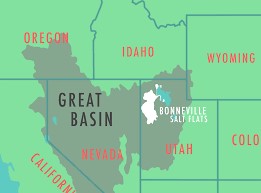Utah Salt Flats
The glistening white salt of the world famous Bonneville Salt Flats is shrinking near the Utah-Nevada line.

The Ministry of New and Renewable Energy has notified to continue the National Bioenergy Programme for the period from FY 2021-22 to 2025-26.
Guru Nanak Jayanti or Gurpurab this year is observed as the 553rd birth anniversary of Guru Nanak Dev Ji.
The Mughal emperor Jahangir ordered the execution of Guru Arjan in 1606.
Indian Army has approved project sanction orders for five Make -2 projects providing impetus to Atma Nirbhaarta.
|
Make-I (Government Funded) |
Make-II (Industry Funded) |
|
This involves the design and development of equipment, systems, major platforms or upgrades thereof by the industry. |
This includes design & development and innovative solutions by Indian vendor for development of prototypes. |
|
The Government provides financial support up to 70% of prototype development cost or a maximum INR 250 crore per Development Agency. |
No Government funding is provided for this but it has the assurance of procurement on successful prototype development. |
References
Researchers have developed a Nano-biosensor for detecting lycopene.
The Nano-biosensor uses a portable smartphone-based upconverting reusable fluorescent paper strip to detect lycopene in tomatoes.
Upconversion is a process where light can be emitted with photon energies higher than the light generating the excitation.